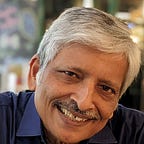Book Review
A Heady Mix of Cultural context, Polemics and Polyphony: Review of the Book “Locating World Cinema” by M.K. Raghavendra
“Interpretations of Film as Culture”
Film/literary scholar, theorist, critic and writer, M. K. Raghavendra has written “Thinking Cinema: A Handbook for Cinephiles” (2022) published by FIPRESCI India. His books “The Writing of the Nation by its Elite” (2022) and “Philosophical Issues in Indian Cinema” (2021) were published by Routledge. These are just a few of his book titles. He is the founder-editor of the online journal “Phalanx”. His writing is polemical, often going against the established notions on cinema. This 2020 book published by Bloomsbury under review continues in that vein. Disclosure: The list of Saturday Film Group members, to whom the book is dedicated, includes yours truly.
“Locating World Cinema” starts with the premise that the vision of an individual alone “is not as aesthetically determining as the contextual circumstances in which the author’s approach originates.” A universally acclaimed creative filmmaker would have been shaped by his/ her local context. Raghavendra’s interest lies in the location of the authorial vision to bring out its importance.
With the advent of film festivals, the kind of films promoted at these festivals are targeted at the festival delegates. Taking up three such films, the book argues how they sport the engineered look with attention to the milieu but do away with sociopolitical discourse specific to it. On the other hand, filmmakers from countries not favorably disposed to the west attract attention by drawing on sociopolitical undercurrents in their cultures. The book is very perceptive about how the Iranian filmmaker Asghar Farhadi in About Elly (2009), and A Separation (2011) — which won Silver Bear for best director and Golden bear for the best film at the Berlin Film Festival respectively — addresses the foreign festival audience about the norms in his country which are known to Iranians. As per the book, the Russian filmmaker Andrey Zvyagintsev caters to the foreign audience by portraying corruption in his country without giving a perspective of the power structure in Leviathan (2014) which got a Palme d’Or nomination and the Best Screenplay award at Cannes.
The chapter on the French filmmaker Robert Bresson who was a Roman Catholic takes a look at his films from a secular perspective. He was heavily influenced by Jansenism, an ascetic form of Catholicism that stressed predestination and grace analogous to the theology of the Protestant reformer, John Calvin. Critics have pointed out the recurring themes of predestination and grace in Bresson’s films. The book quotes Bresson’s self-description as a “Christian atheist”. Since critics have caught on to the Christian part of it, the book takes up the ‘atheist’ aspect to make Bresson important to both Catholics and non-Catholics.
The chapter that contrasts the ideology of the horror film in India and Pakistan is fascinating. The book interprets Andrei Tarkovsky’s Mirror (1975), understood as a personal film, through the political reality of the times. It gives the explanation that “the political and the personal were not discrete as they would be for a citizen in a representative democracy.” Easily the most rewarding part of book is on the Russian filmmaker Aleksei German — little known outside Russia — titled “History as Polyphony” using Mikhail Bakhtin’s notion of the polyphonic text. A must read for students of cinema, the book is not yet available in paperback. It’s available in Kindle and hardbound editions on Amazon: Locating World Cinema: Interpretations of Film as Culture
